Are you curious about Which Countries Rely On Tourism to thrive? This guide explores the nations where tourism is a cornerstone of their economies, impacting everything from employment to infrastructure. If you’re planning a trip to Vietnam, let SIXT.VN be your guide. We offer seamless travel solutions, including airport transfers, hotel bookings, and curated tours, ensuring an unforgettable experience. Discover the best of Vietnamese hospitality and breathtaking landscapes with us! Consider SIXT.VN for your tourism needs.
1. Why Is Tourism Important for Some Countries?
Tourism is vital for numerous countries because it injects significant revenue into their economies, creates jobs, and supports local businesses. For some nations, particularly small island states, it can be the primary driver of economic activity.
- Economic Impact: Tourism generates revenue through accommodation, transportation, attractions, and hospitality services. A study by the World Travel & Tourism Council (WTTC) showed that in 2022, the travel and tourism sector contributed $7.6 trillion to the global economy, representing 7.6% of global GDP.
- Job Creation: The tourism sector is a major employer, providing jobs in hotels, restaurants, tour operations, and transportation. According to the WTTC, the sector supported 319 million jobs globally in 2022.
- Infrastructure Development: Tourism often drives investment in infrastructure, such as airports, roads, and utilities, benefiting both tourists and local residents.
- Cultural Preservation: Revenue from tourism can be used to preserve historical sites, cultural traditions, and natural environments, fostering a sense of national identity.
- Foreign Exchange Earnings: Tourism generates foreign exchange earnings, which can be used to finance imports and reduce a country’s trade deficit.
According to research from the United Nations World Tourism Organization (UNWTO), tourism directly or indirectly supports many aspects of a nation’s financial system. For Vietnam, SIXT.VN enhances the tourism experience by providing reliable services and local expertise.
2. What Factors Make Countries Dependent on Tourism?
Several factors contribute to a country’s dependence on tourism, including natural attractions, economic structure, and strategic policies.
- Natural Attractions: Countries with beautiful beaches, mountains, forests, and wildlife are popular tourist destinations. For example, the Maldives are renowned for their stunning beaches and marine life, making tourism a major economic driver.
- Economic Structure: Countries with small or undiversified economies often rely heavily on tourism. Small island nations, in particular, may lack other significant industries and depend on tourism for income and employment.
- Strategic Policies: Governments can promote tourism through strategic policies, such as investing in infrastructure, marketing campaigns, and visa facilitation. Dubai, for instance, has transformed itself into a major tourist destination through strategic investments and marketing.
- Cultural Heritage: Countries with rich cultural heritage, historical sites, and unique traditions attract tourists interested in cultural experiences. Italy, for example, is famous for its historical sites and artistic treasures, drawing millions of tourists each year.
- Climate: Favorable climate conditions, such as warm temperatures and sunny weather, make countries attractive for tourism. The Caribbean islands, with their tropical climate and beautiful beaches, are popular year-round destinations.
- Accessibility: Easy access through well-connected airports and transportation networks is crucial for attracting tourists. Countries with good infrastructure and connectivity tend to attract more visitors.
- Political Stability: Political stability and safety are important factors for attracting tourists. Countries with stable political environments are generally more attractive to visitors.
These elements align to create a conducive environment for tourism, leading to economic reliance. SIXT.VN leverages these attractions in Vietnam, offering tourists seamless travel experiences.
3. Which Are the Top 10 Countries That Rely Heavily on Tourism?
In 2022, several countries stood out for their significant reliance on tourism revenue as a percentage of their GDP. Here are ten nations where tourism plays a crucial role:
| Rank | Country | Tourism Revenue (% of GDP) | Key Attractions |
|---|---|---|---|
| 1 | Maldives | 68% | Pristine beaches, luxury resorts, and vibrant marine life |
| 2 | Antigua and Barbuda | 55% | Beautiful beaches, coral reefs, and historic sites |
| 3 | Seychelles | 23.1% | Stunning beaches, unique wildlife, and luxury resorts |
| 4 | Jamaica | 23.1% | Beautiful beaches, reggae music, and vibrant culture |
| 5 | Belize | 20.3% | Barrier reef, Mayan ruins, and diverse wildlife |
| 6 | Croatia | 18.9% | Historic cities, stunning coastline, and islands |
| 7 | Montenegro | 18.2% | Beautiful coastline, mountains, and historic towns |
| 8 | Barbados | 16.2% | Beautiful beaches, luxury resorts, and vibrant culture |
| 9 | Albania | 16.2% | Beautiful beaches, historic sites, and natural landscapes |
| 10 | Fiji | 14.33% | Beautiful beaches, coral reefs, and lush rainforests |
These countries illustrate the diverse range of destinations where tourism is a critical economic driver. For visitors to Vietnam, SIXT.VN provides comprehensive services to ensure a memorable trip.
3.1. Maldives: A Paradise Dependent on Tourism
Is it true that tourism accounts for nearly 70% of the Maldives’ GDP?
Yes, tourism contributes about 68% to the Maldives’ GDP. With a population of approximately 515,000 and an area of only 300 km², the Maldives relies heavily on tourism due to its limited land and natural resources. The archipelago consists of 1,190 small islands, with 220 being inhabited, making it an ideal destination for luxury tourism. In 2022, the Maldives welcomed 1.7 million tourists, who spent $4.2 billion, averaging $2,500 per visitor. According to the World Bank, the Maldives has successfully leveraged its natural beauty to create a high-end tourism industry, reflected in its per capita income of $36,400 (PPP). For visitors seeking a luxurious getaway, the Maldives offers unparalleled experiences.
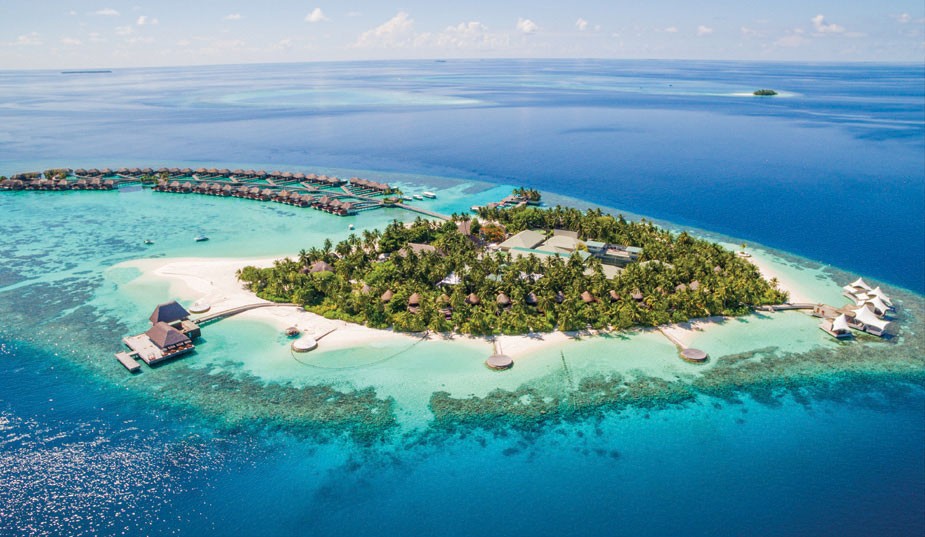 Maldives Tourism
Maldives Tourism
Caption: The Maldives, with its pristine beaches and azure waters, exemplifies a nation heavily reliant on tourism for its economic prosperity.
3.2. Antigua and Barbuda: A Caribbean Gem Reliant on Visitors
How much of Antigua and Barbuda’s economy is fueled by tourism?
Tourism accounts for 55% of Antigua and Barbuda’s GDP. This island nation, with a population of about 101,000 and an area of 440 km², heavily depends on its beaches to attract visitors. In 2022, 265,000 tourists visited Antigua and Barbuda, spending $921 million, averaging $3,500 per visitor. According to the Antigua and Barbuda Tourism Authority, the country has strategically developed both medium-priced and expensive vacation spots to cater to a diverse range of tourists. The tourist season lasts six to seven months, supporting a per capita income of $31,000 (PPP). Exploring the national park and enjoying the beautiful beaches are key attractions in Antigua and Barbuda.
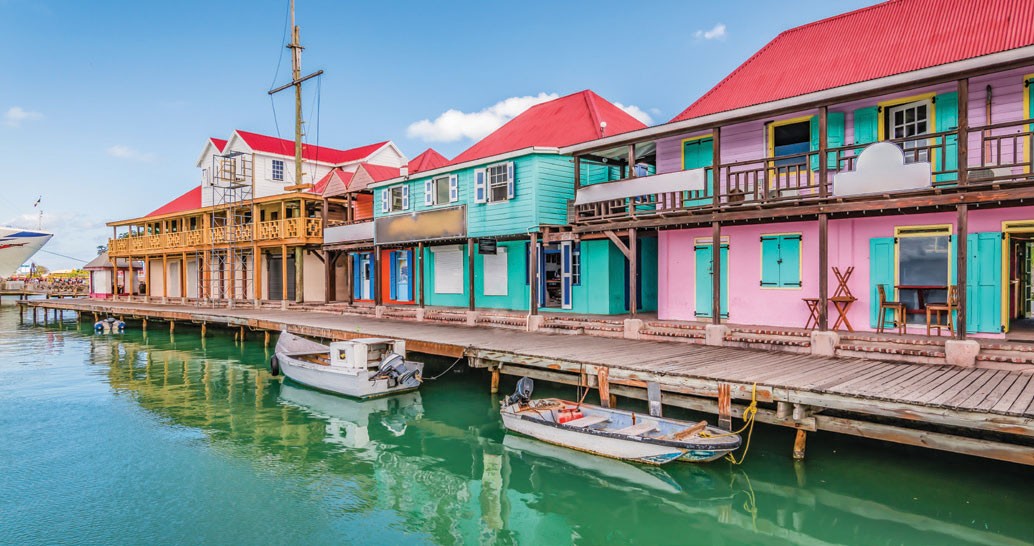 Antigua and Barbuda Beaches
Antigua and Barbuda Beaches
Caption: The picturesque shores of Antigua and Barbuda underscore the significant role tourism plays in the nation’s economic framework.
3.3. Seychelles: An Island Paradise Thriving on Tourism
In what ways does tourism shape the economy of the Seychelles?
Tourism accounts for 23.1% of the Seychelles’ GDP. Located in the Indian Ocean, north of Madagascar, this island nation comprises over 100 small islands, with 33 inhabited. With a population of 100,000, the Seychelles attracts tourists year-round, thanks to temperatures ranging between 24 and 30 degrees. In 2022, 332,000 tourists visited the Seychelles, spending $932 million, averaging $2,800 per visitor. According to the Seychelles Tourism Board, the country’s beaches provide everything needed for an ideal seaside holiday, contributing to a high per capita income of $40,000 (PPP). The Seychelles’ commitment to preserving its natural beauty ensures its continued appeal to tourists.
3.4. Jamaica: Sun, Sand, and Tourism Dollars
Why is tourism so crucial for Jamaica’s economy?
Tourism contributes 23.1% to Jamaica’s GDP. As an island nation in the Caribbean near Cuba, Jamaica draws tourists with its clear sea, hot sun, and white sand. The beach season lasts for ten months, complemented by attractions like canyons, waterfalls, and forests. In 2022, 2.5 million tourists visited Jamaica, spending $3.7 billion, averaging $1,500 per visitor. According to the Jamaica Tourist Board, the country’s vibrant culture and natural beauty make it a sought-after destination, supporting a per capita income of $12,000 (PPP). The blend of natural attractions and cultural experiences solidifies tourism’s pivotal role.
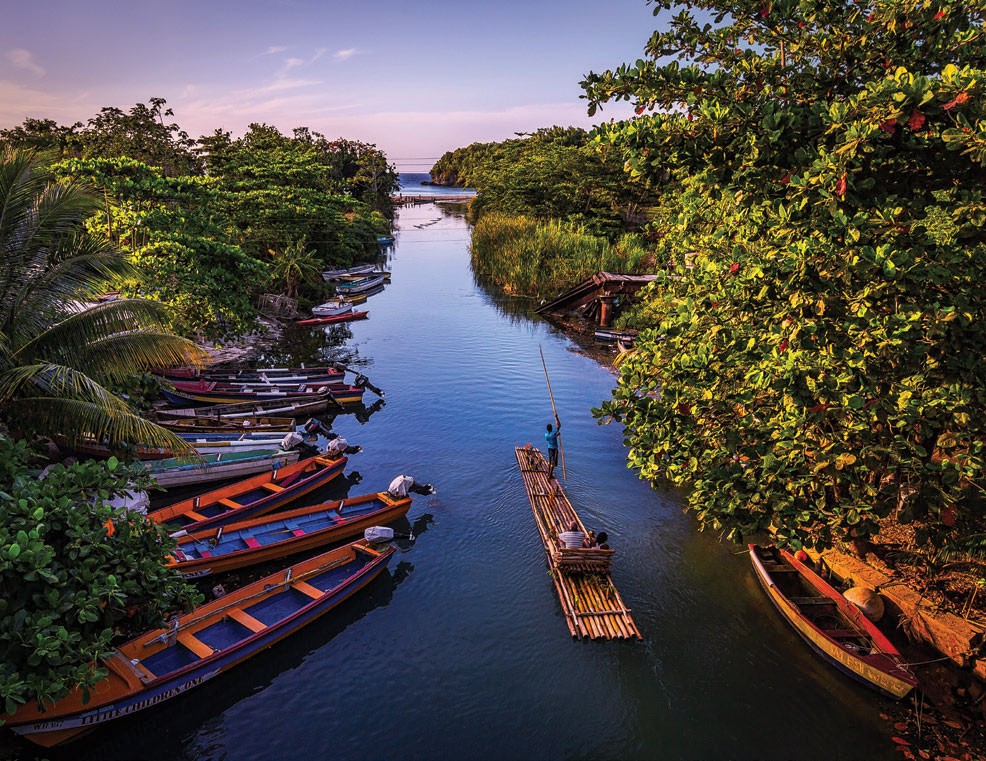 Jamaican Beaches
Jamaican Beaches
Caption: Jamaica’s famous beaches and relaxed atmosphere highlight the country’s dependence on tourism for economic stability.
3.5. Belize: A Hidden Gem Reliant on Eco-Tourism
How does Belize balance tourism with its conservation efforts?
Tourism accounts for 20.3% of Belize’s GDP. Situated on the Caribbean coast, south of Mexico, Belize attracts tourists with its coast, ancient Mayan temples, and the famous Blue Hole. In 2022, 371,000 tourists visited Belize, spending $600 million, averaging $1,620 per visitor. According to the Belize Tourism Board, the high share of tourism in the country’s economy is due to its small size and the underdevelopment of other sectors. The average temperature ranges between 24 and 28 degrees throughout the year, supporting a per capita income of $9,600 (PPP). Belize’s commitment to eco-tourism ensures its natural assets are preserved for future generations.
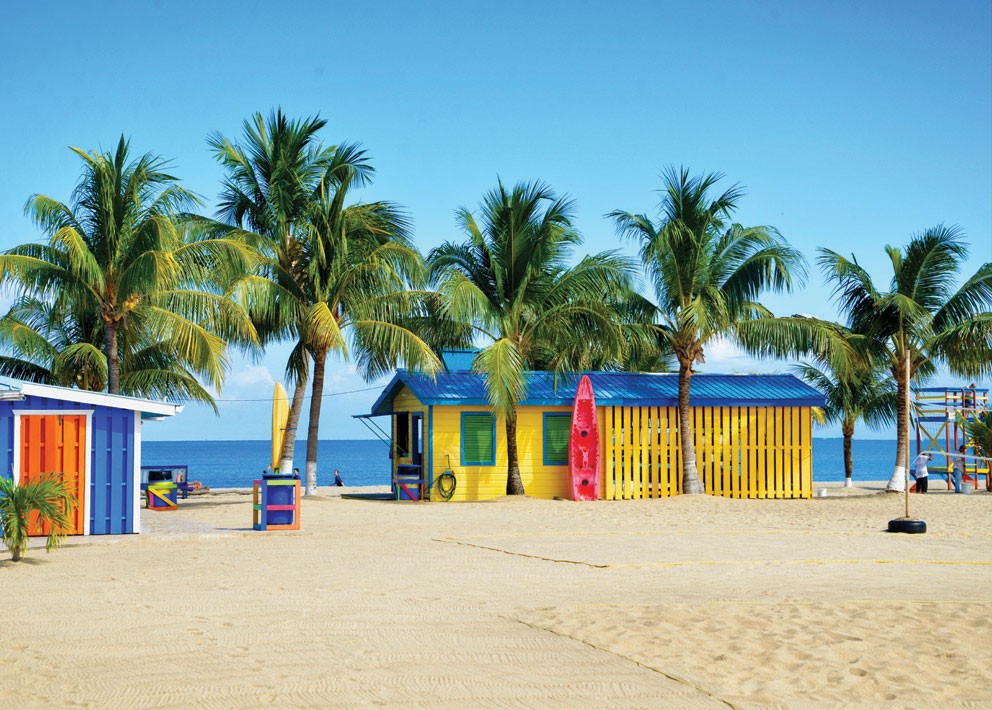 Belize Blue Hole
Belize Blue Hole
Caption: Belize’s iconic Blue Hole and vibrant marine ecosystems demonstrate the potential of eco-tourism in supporting the local economy.
3.6. Croatia: A Coastal Paradise Riding the Tourism Wave
What makes Croatia such a popular destination for tourists?
Tourism accounts for 18.9% of Croatia’s GDP. Located on the shores of the Mediterranean Sea, Croatia boasts a 1,800 km coastline along the Adriatic. In 2022, 15.3 million tourists visited Croatia, spending $13.5 billion, averaging $900 per visitor. According to the Croatian National Tourist Board, tourists are drawn to the coast, historical monuments, and architecture, with the Old Town of Dubrovnik being a UNESCO World Heritage Site. The country’s per capita income is $42,500 (PPP). Croatia’s blend of history and natural beauty makes it a top tourist destination.
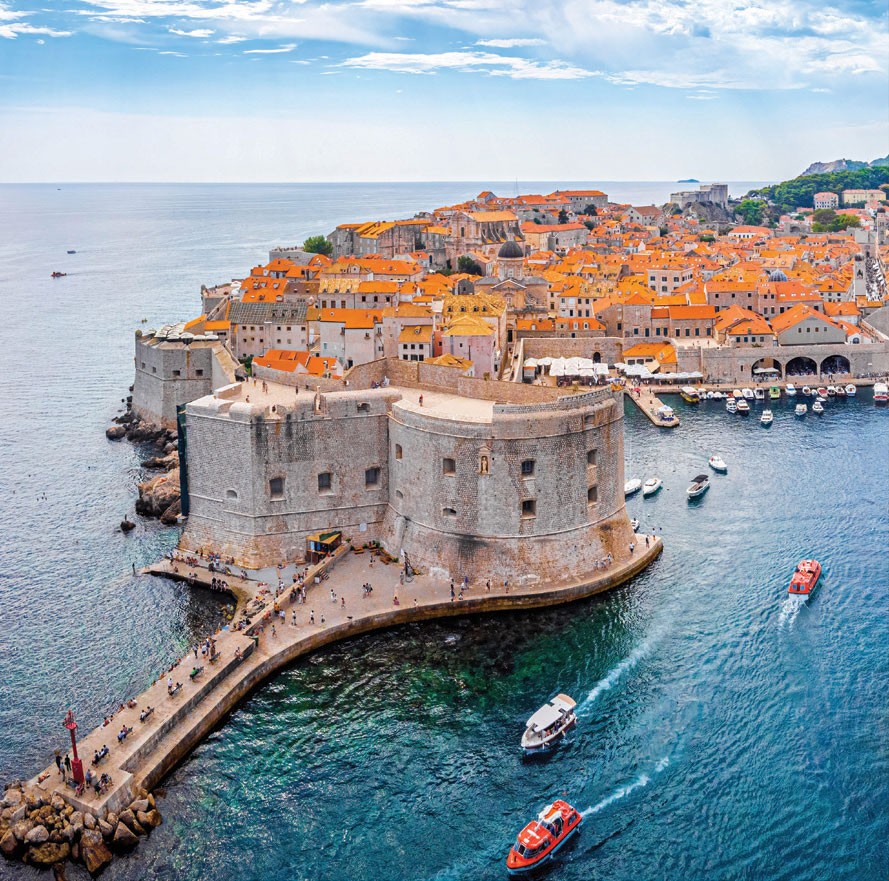 Croatia Dubrovnik Old Town
Croatia Dubrovnik Old Town
Caption: The historic charm of Dubrovnik in Croatia, a UNESCO World Heritage Site, highlights the appeal of cultural tourism in the region.
3.7. Montenegro: A Balkan Treasure Thriving on Tourism
How does Montenegro capitalize on its natural beauty for tourism?
Tourism contributes 18.2% to Montenegro’s GDP. Situated in the north of the Balkan Peninsula on the Adriatic coast, Montenegro attracts tourists with its coastline and mountain slopes. In 2022, two million tourists visited Montenegro, spending $1.1 billion, averaging $550 per visitor. According to the National Tourism Organisation of Montenegro, the country has a 296-kilometer coastline dotted with well-preserved old towns and historical monuments, supporting a per capita income of $29,000 (PPP). The historical settlement of Sveti Stefan is a popular destination.
 Montenegro Coastline
Montenegro Coastline
Caption: Montenegro’s stunning coastline, where mountains meet the Adriatic Sea, illustrates the country’s reliance on tourism for economic growth.
3.8. Barbados: A Caribbean Island Dependent on Tourism
Why is tourism so critical for the economy of Barbados?
Tourism accounts for 16.2% of Barbados’s GDP. This Caribbean island, located north of Venezuela, attracts visitors with its white sand and green sea. In 2022, 443,000 tourists visited Barbados, spending $929 million, averaging $2,100 per visitor. According to the Barbados Tourism Marketing Inc, the country’s dry season from January to May is ideal for seaside tourism. The per capita income is $18,000 (PPP). Barbados’s reputation as a premier Caribbean destination reinforces its reliance on tourism.
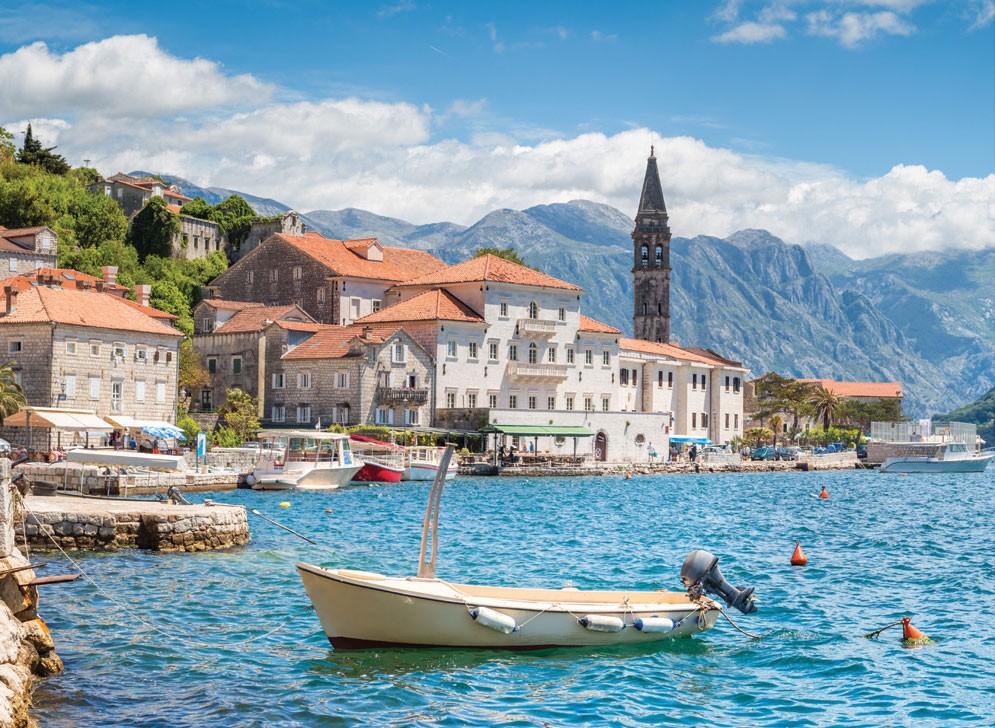 Barbados Beach
Barbados Beach
Caption: The pristine beaches of Barbados exemplify the island’s dependence on tourism as a key economic driver.
3.9. Albania: An Emerging Tourist Destination
How does Albania attract tourists and what is its economic impact?
Tourism contributes 16.2% to Albania’s GDP. Located west of the Balkan Peninsula on the Adriatic Sea, Albania attracts tourists with its beaches, historical and archaeological monuments, and medical tourism. In 2022, 6.7 million tourists visited Albania, spending $3 billion, averaging $440 per visitor. According to the Albanian National Tourism Agency, cities like Butrint, Gjirokastër, and Berat are UNESCO World Heritage Sites. The per capita income is $17,800 (PPP). Albania’s growing appeal to tourists underscores the importance of tourism to its economy.
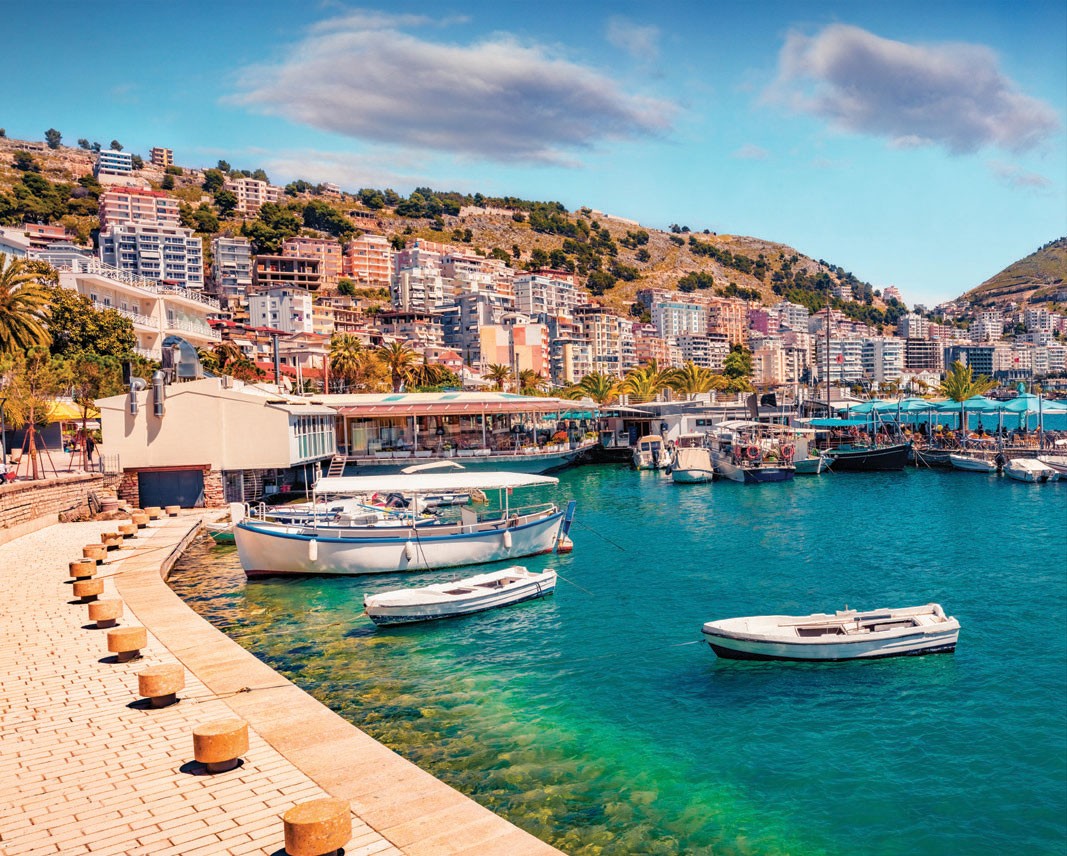 Albania Beaches
Albania Beaches
Caption: Albania’s emerging tourism sector is driven by its beautiful beaches and historical sites, playing a vital role in its economic development.
3.10. Fiji: An Island Nation Reliant on Tourism
To what extent does tourism drive Fiji’s economy?
Tourism accounts for 14.33% of Fiji’s GDP. This small island country in the southwest Pacific Ocean attracts tourists with its fantastic beaches, tropical forests, and villages. In 2022, 636,000 people traveled to Fiji, spending $700 million, averaging $1,100 per visitor. According to Tourism Fiji, the country’s tropical climate and natural attractions make it a popular destination, supporting a per capita income of $14,000 (PPP). Fiji’s blend of natural beauty and cultural experiences ensures its continued reliance on tourism.
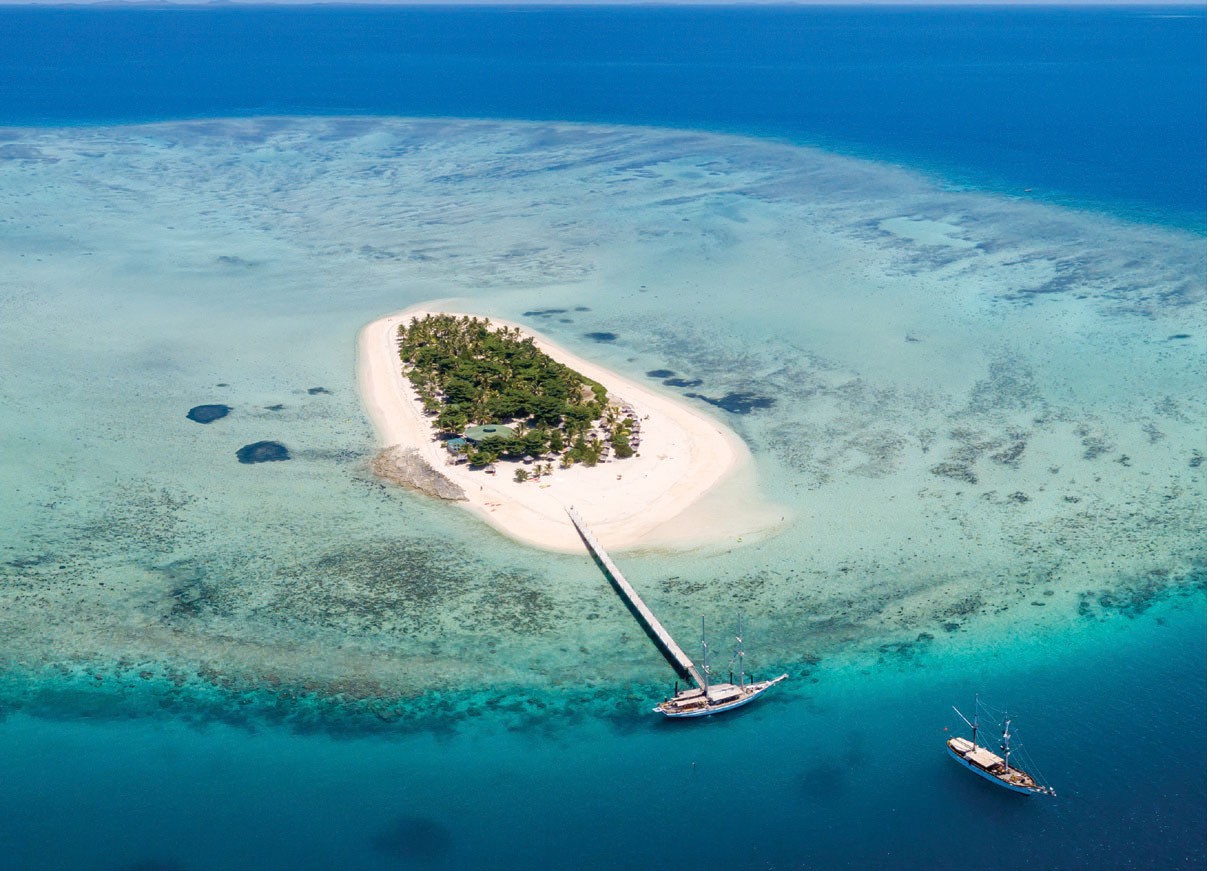 Fiji Beaches
Fiji Beaches
Caption: The idyllic beaches of Fiji, framed by lush greenery, symbolize the critical role tourism plays in the country’s financial stability.
4. What Are the Benefits of Tourism for These Countries?
Tourism provides numerous benefits, including economic growth, job creation, infrastructure development, and cultural preservation.
- Economic Growth: Tourism revenue contributes significantly to the GDP of these countries, supporting economic growth and development. The influx of foreign currency boosts their economies and helps finance imports.
- Job Creation: The tourism sector is a major employer, providing jobs in hotels, restaurants, tour operations, and transportation. This helps reduce unemployment and improve living standards.
- Infrastructure Development: Tourism often drives investment in infrastructure, such as airports, roads, and utilities. This benefits both tourists and local residents by improving connectivity and access to essential services.
- Cultural Preservation: Revenue from tourism can be used to preserve historical sites, cultural traditions, and natural environments. This fosters a sense of national identity and pride.
- Environmental Conservation: Eco-tourism initiatives can promote environmental conservation by generating revenue for protected areas and supporting sustainable practices.
- Improved Living Standards: Tourism can lead to improved living standards by increasing incomes, providing access to better education and healthcare, and supporting local businesses.
- Diversification of Economy: While heavily reliant on tourism, some countries also use tourism revenue to diversify their economies by investing in other sectors.
These benefits underscore the importance of sustainable tourism practices to ensure long-term prosperity.
5. What Are the Challenges Faced by Countries Reliant on Tourism?
Despite its benefits, tourism can also pose challenges, including economic vulnerability, environmental impact, and socio-cultural issues.
- Economic Vulnerability: Over-reliance on tourism can make countries vulnerable to economic shocks, such as global recessions, natural disasters, and pandemics. For example, the COVID-19 pandemic had a devastating impact on tourism-dependent economies.
- Environmental Impact: Tourism can contribute to environmental degradation through pollution, deforestation, and overuse of resources. This can damage the natural attractions that draw tourists in the first place.
- Socio-Cultural Issues: Tourism can lead to the commodification of culture, loss of traditional values, and social tensions between tourists and local residents.
- Infrastructure Strain: High tourist volumes can strain infrastructure, leading to overcrowding, traffic congestion, and inadequate public services.
- Leakage of Revenue: A significant portion of tourism revenue may flow out of the country through foreign-owned hotels, tour operators, and suppliers, limiting the economic benefits for local communities.
- Seasonality: Tourism is often seasonal, leading to fluctuations in income and employment throughout the year. This can create economic instability and hardship for local residents.
- Dependence on External Factors: Tourism can be affected by external factors, such as political instability, terrorism, and health crises, which are beyond the control of the host country.
Addressing these challenges requires careful planning, sustainable tourism practices, and diversification of the economy.
6. How Can These Countries Diversify Their Economies?
Diversifying economies is essential for reducing reliance on tourism and building resilience to external shocks. Here are several strategies countries can employ:
- Develop Other Industries: Invest in other sectors, such as agriculture, manufacturing, technology, and renewable energy, to create alternative sources of income and employment.
- Promote Education and Skills Development: Invest in education and training programs to develop a skilled workforce capable of supporting a diversified economy.
- Encourage Entrepreneurship: Support local entrepreneurs by providing access to financing, training, and mentorship programs. This can foster innovation and create new businesses in various sectors.
- Improve Infrastructure: Invest in infrastructure, such as transportation, communication, and energy, to support the development of other industries.
- Attract Foreign Investment: Create a favorable investment climate by reducing bureaucracy, improving regulatory frameworks, and offering incentives to foreign investors.
- Promote Sustainable Tourism: Implement sustainable tourism practices to minimize environmental impact, preserve cultural heritage, and maximize the economic benefits for local communities.
- Strengthen Regional Integration: Participate in regional trade agreements and economic partnerships to expand market access and promote economic cooperation.
- Develop Financial Services: Establish robust financial services, including banking, insurance, and investment management, to support economic diversification.
- Invest in Research and Development: Support research and development activities to promote innovation and develop new products and services in various sectors.
By diversifying their economies, countries can reduce their vulnerability to external shocks and create a more sustainable and prosperous future.
7. What Is Sustainable Tourism and Why Is It Important?
Sustainable tourism is tourism that takes full account of its current and future economic, social, and environmental impacts, addressing the needs of visitors, the industry, the environment, and host communities.
- Environmental Sustainability: This involves minimizing the environmental impact of tourism by reducing pollution, conserving resources, and protecting biodiversity.
- Economic Sustainability: This involves ensuring that tourism generates economic benefits for local communities, such as jobs, income, and business opportunities.
- Social Sustainability: This involves respecting the cultural heritage and traditions of host communities and promoting social inclusion and equity.
Sustainable tourism is important because it helps to ensure that tourism can continue to provide benefits for future generations. It also helps to protect the environment, preserve cultural heritage, and improve the quality of life for local communities.
SIXT.VN is dedicated to promoting sustainable tourism practices, ensuring that your visit to Vietnam is both enjoyable and environmentally responsible.
8. How Can Tourists Contribute to Sustainable Tourism?
Tourists can play a crucial role in promoting sustainable tourism by making responsible choices and supporting sustainable businesses.
- Choose Eco-Friendly Accommodation: Stay in hotels and resorts that have implemented sustainable practices, such as energy and water conservation, waste reduction, and responsible sourcing.
- Support Local Businesses: Shop at local markets, eat at local restaurants, and hire local guides to support the local economy and promote cultural exchange.
- Respect Local Culture: Learn about and respect the customs and traditions of the host community. Dress modestly, ask for permission before taking photos, and avoid behaviors that may be offensive.
- Reduce Waste: Minimize waste by bringing reusable water bottles, shopping bags, and containers. Dispose of waste properly and recycle whenever possible.
- Conserve Resources: Conserve water and energy by turning off lights and air conditioning when leaving your accommodation. Take shorter showers and avoid wasting water.
- Choose Sustainable Transportation: Use public transportation, walk, or bike whenever possible. If you need to rent a car, choose a fuel-efficient or electric vehicle.
- Protect Wildlife: Avoid activities that may harm wildlife, such as feeding animals or purchasing products made from endangered species.
- Educate Yourself: Learn about the environmental and social issues facing the destination and support organizations that are working to address them.
- Offset Your Carbon Footprint: Consider offsetting the carbon emissions from your travel by donating to a reputable carbon offset program.
By making responsible choices, tourists can help to promote sustainable tourism and ensure that future generations can enjoy the benefits of travel.
9. What Are the Future Trends in Tourism for These Countries?
The future of tourism for these countries is likely to be shaped by several trends, including sustainable tourism, digital technology, and changing traveler preferences.
- Sustainable Tourism: As awareness of environmental and social issues grows, there will be increasing demand for sustainable tourism options. Countries that prioritize sustainability will be better positioned to attract environmentally conscious travelers.
- Digital Technology: Digital technology will continue to transform the tourism industry, with travelers using mobile apps, online booking platforms, and social media to plan and book their trips. Countries that invest in digital infrastructure and promote digital literacy will be better positioned to compete in the global tourism market.
- Personalized Experiences: Travelers are increasingly seeking personalized and authentic experiences that reflect their interests and values. Countries that can offer customized tours, activities, and accommodation options will be better positioned to attract these travelers.
- Health and Wellness Tourism: As people become more health-conscious, there will be increasing demand for health and wellness tourism options. Countries that offer spa retreats, yoga retreats, and other wellness activities will be better positioned to attract these travelers.
- Adventure Tourism: Adventure tourism is expected to continue to grow in popularity, with travelers seeking outdoor activities such as hiking, biking, climbing, and water sports. Countries that offer a wide range of adventure tourism options will be better positioned to attract these travelers.
- Cultural Tourism: Cultural tourism is also expected to remain popular, with travelers seeking to learn about and experience the history, art, and traditions of different cultures. Countries that have a rich cultural heritage will be well-positioned to attract these travelers.
By adapting to these trends and investing in sustainable tourism practices, digital technology, and personalized experiences, these countries can ensure that their tourism industries remain competitive and sustainable in the future.
10. How Can SIXT.VN Enhance Your Travel Experience in Vietnam?
Planning a trip to Vietnam? SIXT.VN is your trusted partner for seamless and unforgettable travel experiences. We understand the unique challenges and needs of international tourists, and we offer a comprehensive range of services to make your journey smooth and enjoyable.
- Effortless Airport Transfers: Start your trip stress-free with our reliable and comfortable airport transfer services. Our professional drivers will greet you upon arrival and ensure a safe and timely journey to your hotel.
- Convenience: Avoid the hassle of navigating public transportation or waiting in long taxi lines.
- Safety: Travel with experienced and licensed drivers who prioritize your safety and comfort.
- Comfort: Enjoy a comfortable and air-conditioned vehicle, ensuring a relaxing start to your vacation.
- Wide Selection of Hotels: Find the perfect accommodation to suit your needs and budget with our extensive selection of hotels in Hanoi and across Vietnam.
- Variety: Choose from budget-friendly hostels to luxurious five-star hotels.
- Convenience: Book your hotel quickly and easily through our user-friendly online platform.
- Value: Enjoy competitive rates and exclusive deals on hotels across Vietnam.
- Curated Tours of Hanoi: Explore the best of Hanoi with our curated tours, led by knowledgeable local guides.
- Expert Guides: Learn about the history, culture, and traditions of Hanoi from our experienced guides.
- Customized Itineraries: Choose from a range of itineraries to suit your interests and time constraints.
- Hassle-Free Travel: Let us take care of the logistics, so you can relax and enjoy your vacation.
SIXT.VN is committed to providing exceptional service and ensuring that your trip to Vietnam is a memorable one.
Ready to explore Vietnam? Contact SIXT.VN today to book your airport transfer, hotel, and tour. Let us take care of the details, so you can focus on creating lasting memories.
- Address: 260 Cau Giay, Hanoi, Vietnam
- Hotline/WhatsApp: +84 986 244 358
- Website: SIXT.VN
FAQ Section:
Q1: Which countries rely on tourism the most?
A1: Countries like Maldives, Antigua and Barbuda, and Seychelles rely heavily on tourism due to their unique attractions and small economies.
Q2: What percentage of GDP does tourism contribute to the Maldives?
A2: Tourism contributes approximately 68% to the Maldives’ GDP, making it the most tourism-dependent country.
Q3: How does tourism benefit these countries?
A3: Tourism boosts economic growth, creates jobs, drives infrastructure development, and helps preserve cultural heritage.
Q4: What are the challenges of relying on tourism?
A4: Challenges include economic vulnerability to external shocks, environmental impact, and potential socio-cultural issues.
Q5: How can countries diversify their economies away from tourism?
A5: By investing in other industries, promoting education, encouraging entrepreneurship, and improving infrastructure.
Q6: What is sustainable tourism?
A6: Sustainable tourism balances the needs of visitors, the industry, the environment, and host communities for long-term benefits.
Q7: How can tourists contribute to sustainable tourism?
A7: By choosing eco-friendly accommodations, supporting local businesses, respecting local culture, and reducing waste.
Q8: What are the future trends in tourism for these countries?
A8: Trends include sustainable tourism, digital technology integration, personalized experiences, and health and wellness tourism.
Q9: How does SIXT.VN enhance the travel experience in Vietnam?
A9: SIXT.VN provides airport transfers, hotel bookings, and curated tours, ensuring a seamless and enjoyable trip.
Q10: Where can I find more information about SIXT.VN’s services?
A10: Visit SIXT.VN or contact our hotline at +84 986 244 358 for detailed information and bookings.



